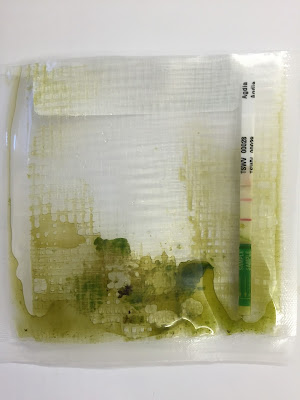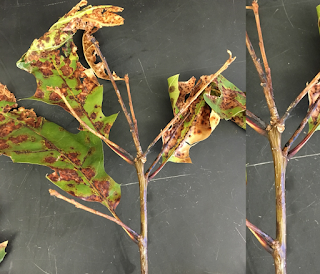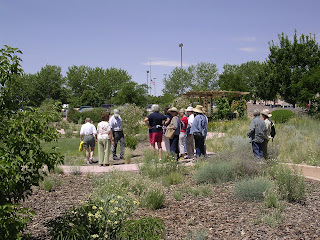 |
| Figure 1. Garlic plants exhibiting severe symptoms of stem and bulb nematode (Photo: J. M. French, NMSU-PDC) |
Stem and bulb nematode, Ditylenchus dipaci, discovered on
Garlic in the Rio Grande Valley of New Mexico -
In May of 2015 garlic plants (Allium
sativum) from a home garden in were submitted to the Plant Diagnostic
Clinic at NMSU. The grower reported poor
growth in ~30% of 1,200 plants originating from seed purchased in southern New Mexico. Early symptoms included chlorosis, wilting,
and poor root and bulb development. As
the disease progressed, roots turned brown, were easily separated from the
bulb, and older foliage had collapsed and turned straw colored (Figure 1). Microscopic examination showed large numbers
of nematodes present in symptomatic garlic plants. Based morphological
characteristics of the nematode and the DNA sequence of the ITS-1 region, the
nematodes were identified as D. dipsaci.
This discovery is highly significant as this nematode has the
potential to cause significant economic losses on agriculturally important
hosts grown in the state and in the region. The longevity of this pest in the
soil and international trade issues are major concerns for producers. Based on information from
the grower it appears that this is an isolated introduction from infested plant
material which can potentially be contained as the presence of D. dipsaci was discovered before any
material was harvested or distributed. Monitoring of production areas in the
state will be performed to determine if this was an isolated and contained
introduction or if this important pest has become established in NM.


























